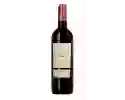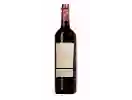
Vignobles BertrandDomaine du Feynard Sauvignon
This wine generally goes well with vegetarian, rich fish (salmon, tuna etc) or shellfish.
Food and wine pairings with Domaine du Feynard Sauvignon
Pairings that work perfectly with Domaine du Feynard Sauvignon
Original food and wine pairings with Domaine du Feynard Sauvignon
The Domaine du Feynard Sauvignon of Vignobles Bertrand matches generally quite well with dishes of rich fish (salmon, tuna etc), shellfish or vegetarian such as recipes of gravelax salmon, quick crayfish chicken or quiche lorraine.
Details and technical informations about Vignobles Bertrand's Domaine du Feynard Sauvignon.
Discover the grape variety: Dattier de Beyrouth
Of natural origin, it was initially multiplied in the region of Cavaillon in Vaucluse. It is also present in many countries where the climate allows the grapes to ripen well. It is registered in the Official Catalogue of table grape varieties, list A1. Finally, the Beirut Date Tree has long been used as a progenitor for new varieties of table grapes, with Danuta being a good example.
Last vintages of this wine
The best vintages of Domaine du Feynard Sauvignon from Vignobles Bertrand are 2015
Informations about the Vignobles Bertrand
The Vignobles Bertrand is one of of the world's greatest estates. It offers 34 wines for sale in the of South West to come and discover on site or to buy online.
The wine region of South West
The South-West is a large territorial area of France, comprising the administrative regions of Aquitaine, Limousin and Midi-Pyrénées. However, as far as the French wine area is concerned, the South-West region is a little less clear-cut, as it excludes Bordeaux - a wine region so productive that it is de facto an area in its own right. The wines of the South West have a Long and eventful history. The local rivers play a key role, as they were the main trade routes to bring wines from traditional regions such as Cahors, Bergerac, Buzet and Gaillac to their markets.
The word of the wine: Breaking
Accident (oxidation or reduction) causing a loss of limpidity of the wine.














